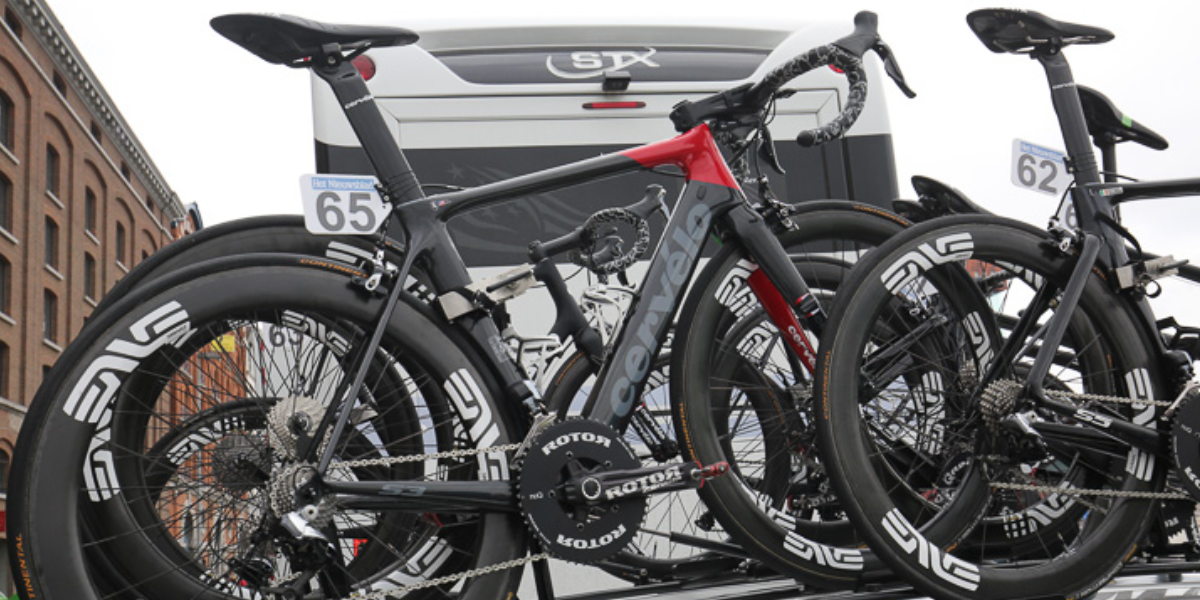Best Time Trial Tyres 2021 Reviews
| Image | Product | Dimensions | Color | Price |
|---|---|---|---|---|
 | Schwalbe Pro One Tubeless | 11.8 x 11.8 x 11.8 in | Black | Check current price |
 | Michelin Power Competition Road Tires | 700 c x 23 mm, 700 c x 25 mm | Black | Check current price |
 | Hutchinson Fusion5 Galactik Tubeless | 10 x 3 x 3 in | Black | Check current price |
Contents
Schwalbe Pro One Tubeless

Michelin Power Competition Road Tire

Hutchinson Fusion5 Galactik Tubeless

Reviews of Best Time Trial Tyres
Tyre option has a substantial influence on your trip – most roadway riders prioritise puncture resistance and grip in the wet over winter season and low rolling resistance come summer season. Winter season tyres are generally created to decrease the number of punctures that would otherwise hit the pause button on your trips, and offer much better grip in the wet. Summer tires are typically created using a soft compound therefore, they could offer lower rolling resistance, making them faster and lighter but more vulnerable to rips and damages. An excellent set of tires can help you go faster and be more comfy while doing so. They might even help you corner much better too. Concerning choosing tyres, it’s simple to find yourself overwhelmed, due to the large selection to pick from. Choosing the right tires for each and every situation you may find on your bike will make sure that can be done more. Whether you ride on rocks, snow, simple trails or trails with every kind of terrain, there’s definitely a tire for you. Bike tires are some of the most important pieces of a bike, so you’ll want to make sure you’ve got the right ones and that you treat them right.
Crucial Things to Think About When Purchasing Best Time Trial Tyres
The supreme bike tyre would be incredibly light, absolutely resistant to leaks and remarkably quickly. While there is no such tyre, getting a pair of three of the attributes could be what you have to settle one. Create your tyre choice in accordance with the kind riding that will be done. For instance, if most of your time is invested going out on gravel backroads or travelling on rough urban roadways, you’ll be much better off with a tire that’s geared towards puncture security over speed and weight. Alternately, racy, lightweight tyres could possibly be the more sensible choice for yourself when the roads you locate yourself on are usually dry, without debris and smooth. If you wish to know a tyre’s puncture protection, where it stands in weight, and its rolling resistance triangle, consider the website from the manufacturer or check the packaging.
- Tires which are wide are definitely more popular. Where once 23mm rubber was the uniform issue ‘choice’, now 25mm is the norm but many riders go for 28mm to better maximise the added cornering grip and comfort. When coupled with rims which fit correctly, wider tires can provide better aerodynamic stability to your car. But, prior to making a purchase, it is important to determine the capacity from the frame. Wider tires work better for your patch. A wider tyre can be faster because it minimises a tyre’s rolling resistance by reducing the energy lost to casing deformation. Wide tires provides you with a wider patch. One of the more significant features to many people is wider tires (25mm and above) may be used at lower pressures to deliver smoother rides.
- The majority of the tire is definitely the casing, woven material that covers the beads and fosters the entire shape. Many tyres are made of nylon fabric, but those in the greater end might be manufactured from silk or cotton. The ride quality is quite a bit affected by the casing as a result of threads per inch value (referred to as TPI). Sacrificing lower rolling resistance for puncture resistances, tires with thicker treads and lower TPI exist. High TPI tyres have a lighter in weight and less rolling resistance on the flip side, there is a higher chance of getting punctures.
- The tread may be the rubber on tires that touches the path when you are driving into it. It’s thicker than the sidewall and sometimes features a three-dimensional pattern. In relation to tread, there is lots of debate many believe tread is not necessary for bike tyres. Because the texture of any roadway surface area is so different, some tread patterns offer a quantifiable mechanical adhesion to the ground. The rubber substances used for different tyres are a carefully guarded trick. Generally softer compounds will offer superior traction but will wear quickly, while harder compounds will stand up to more abuse but won’t have the same grip.
- Grip vs Durability – if you’re searching for bike tires, you won’t want to sacrifice too much in rolling resistance or wear. Despite the fact that a soft compound gives a better grip, it can break down quickly. The lifespan of any harder tyre is longer, however they do not have much traction. Getting the balance right will mostly depend upon how aggressive you ride and the surface you ride on. An indication of a tyre’s hardness is measured in numbers – the higher the number, the harder the tyre. While individuals with a 60a compound will be more durable and could last a few years, those that have a 42a compound are softer and are better for corning traction and braking but need replacing as frequently as every six months. If you’d want to balance both, then you have to know that a great many makers have a selection of multi-compound tires available.
Other Elements To Consider
- Sidewall – Rubber is applied to the side of the case in between the tread and the bead to form the sidewall. Each tyre will have various rubber compounds and thickness depending upon its desired purpose.
- Sub-tread comes on various types of tires and provides some protection against punctures that you may incur. You will find outright material and design differences between inexpensive tires versus those who are a little more high end.
Time Trial Tyres Concepts
- Tires will wear as time passes, and it’s crucial that you keep watch over the tread. Not only for the life of the tyre, but watching out for stuck glass or flints that haven’t penetrated just yet. If you want to lower your tire issues (particularly with punctures) then be sure to take proper care of your bike with frequent cleaning and basic maintenance/inspection before going out again.
- There are many things factored into the cost of tires including quality, weight, rubber and the fee for construction them. Cheaper alternatives tend to lack in grip, leak defense and are generally provided with a heavier, steal bead. Steel rigid tires are heaver and harder to transfer from the bike than other choices like folding tires. Both hands will not be pleased with you, since getting them off and on the wheel is actually difficult, but are indeed cheaper. A cheaper option might appear to be your best option but it might not be as a number of the tyre manufacturers available often ensure that their compounds are very best for an array of temperatures. Consequently such tires can withstand any season and their protection, grip or longevity works effectively all year round.
- These treads are typical different and intended to be used for different terrains. It is advisable to invest in a tread that is certainly intended for what you are working with it for. In case you are still undecided about how you are going to make use of bike, it can be good to choose inverted treads. Although they are certainly not excellent for all areas, they are perfect for casual riders and those that like riding in various terrains.
- Tire Width – goes along with tire sizes, since there isn’t much variation. It is very important realize that narrow tires if you want to go on a straight path while going fast, while wide tires are good for turns and gripping. The selection of tires should reflect the places you may be using them probably the most.
Conclusion
Smart experienced cyclists recognize that bike tires are far more than a straightforward rubber ring design but that every tire features its own weaknesses and strengths that should be taken into consideration. Wherever you happen to be riding your bike, you need to hold the right tires to the bike. Make sure to compare all of the important features, materials used, and costs before you make an option around the terrain appropriate tires you would like for the bikes.

